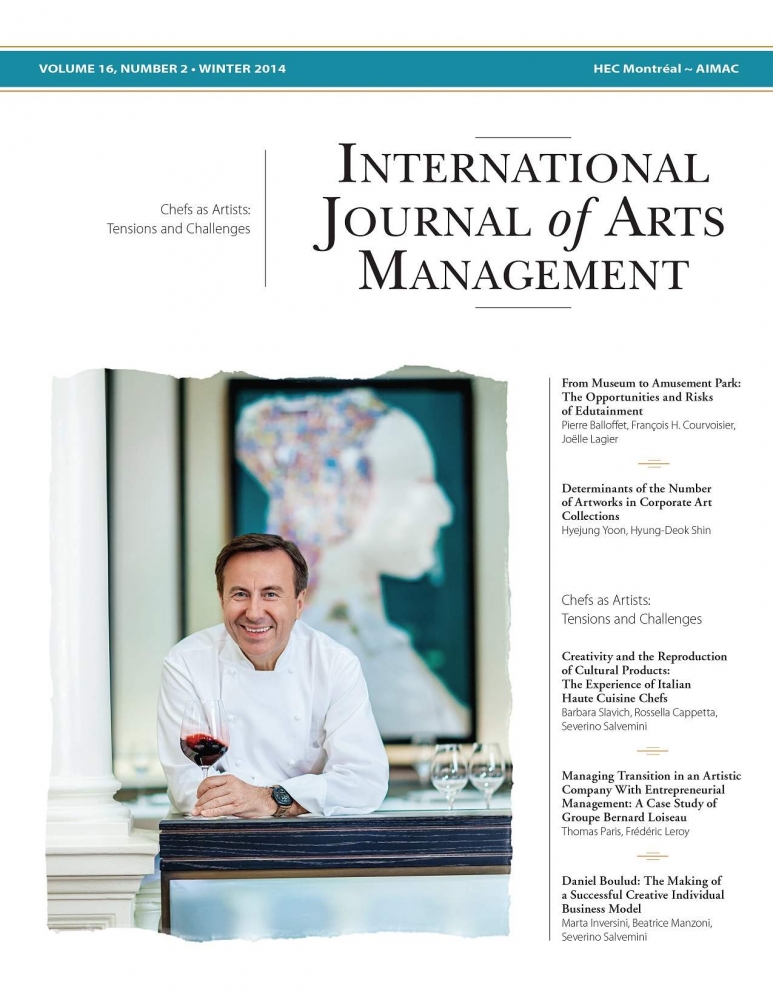IJAM Volume 16 Number 2 (PRINT)
Product: Journal
$84.00 CA
EDITOR’S NOTE
Dear readers,
As we head into the new year, IJAM looks at the central role played by art and arts management in the business development of different industries. And, for the first time, the Journal is offering readers a special feature: the intersection of art and gastronomy.
There is no denying the growing popularity of gastronomy, a trend characterized by the high value placed on art in both the conception and the presentation of dishes. Chefs, like artists in several fields, are constantly searching for a balance between art and management in order to not only survive but thrive in a universe where the pressure to excel resembles the pressures faced by artists in the performing and visual arts.
In the first article presented as part of this special feature, Barbara Slavich, Rossella Cappetta and Severino Salvemini explore the tension between creation and standardization, which they analyze in relation to two Italian chefs with two-star Michelin rankings. The authors’ findings demonstrate this tension and the mechanisms that have been put in place to effectively manage it. The next contribution highlights the entrepreneurial qualities of chefs and draws parallels between these and the entrepreneurial qualities of artists in other disciplines. The authors, Thomas Paris and Frédéric Leroy, describe the rise and dramatic fall of the French chef Bernard Loiseau. This article raises the issue of succession in a context where knowledge and execution reside with the creator. To conclude our special feature on art and gastronomy, Marta Inversini, Beatrice Manzoni and Severino Salvemini discuss the highly effective business model developed by the French-American chef Daniel Boulud with his empire of restaurants in cities around the world.
Turning to the other contributions in this issue of the Journal, Pierre Balloffet, François H. Courvoisier and Joëlle Lagier look at another type of convergence, one that has received scant attention – that between arts and entertainment. Indeed, these authors observe an increasing blurring of the lines between the two spheres. They make their argument by pointing to the recreational and interactive features that have made their way into many museum exhibitions. They also suggest means of ensuring complementary cohabitation of art and entertainment. In the next contribution, Hyejung Yoon and HyungDeok Shin turn their attention to the motivations for companies to collect works of art and the factors that influence the size of corporate collections.
I hope you enjoy this issue of IJAM and I wish you a happy and healthy 2014 – may it be a year filled with interesting projects.
Johanne Turbide
Editor
